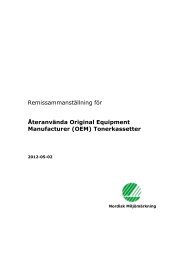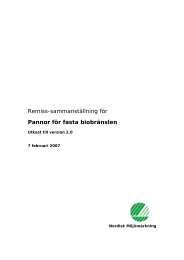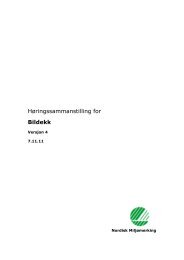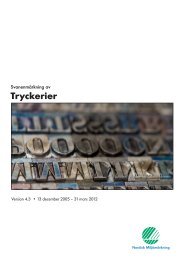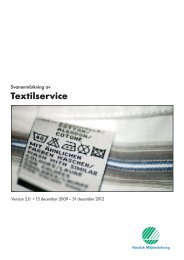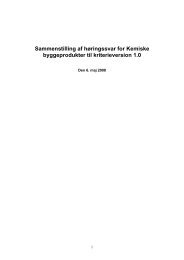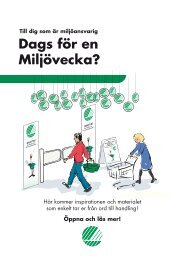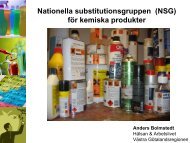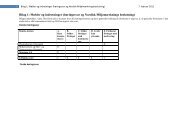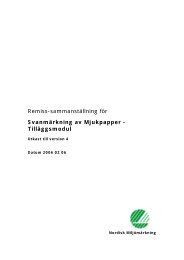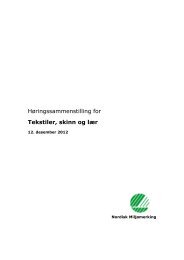Småhus, flerbostadshus och förskolebyggnader - Svanen
Småhus, flerbostadshus och förskolebyggnader - Svanen
Småhus, flerbostadshus och förskolebyggnader - Svanen
You also want an ePaper? Increase the reach of your titles
YUMPU automatically turns print PDFs into web optimized ePapers that Google loves.
Nordisk Miljømerking<br />
Hus, leiligheter og barnehager 089/versjon 2<br />
Høringssammenstilling, oppdatert 10. august 2010<br />
Copper can accumulate in organisms and affect grow and reproduction of simple aquatic<br />
animals.<br />
The term "copper accumulates" has no ecotoxicological meaning, because copper is an<br />
essential element and the uptake/accumulation varies for different species and life stages,<br />
depending on nutritional needs.<br />
In the copper risk assessment, it has been concluded that organisms have developed well<br />
controlled homeostatic mechanisms to appropriately regulate the internal copper<br />
concentrations in accordance to nutritional needs. TCNES/SCHER agreed on the key<br />
conclusions: “No regional risks for the aquatic (freshwater and marine) and terrestrial<br />
environments and no concern for secondary poisoning”.<br />
Emissions of copper and copper compounds occur during extraction, primary<br />
production, use and disposal.<br />
Emissions of copper ions and compounds do occur during extraction, primary production,<br />
use and disposal. Copper is a natural element and therefore natural releases of copper are<br />
a continuous process. Considering that copper is an essential element, it is therefore<br />
critical to assess whether these releases cause adverse effects in the receiving<br />
environment.<br />
In the copper risk assessment, it has been concluded that the current emissions from<br />
primary production, use and disposal are generally safe for man and the environment. The<br />
industry has invested continuously to reduce these emissions. For the Nordic industries<br />
and Nordic usage, no risks have been observed in the copper risk assessment.<br />
Copper is a limited resource and with current rates of consumption there is only enough<br />
ore for 35 years of consumption [MM 2007].<br />
This is a common misconception. There is no clear position on the global reserves of<br />
copper. Ore prospecting is expensive and is carried out by individual mining companies<br />
in line with their own market forecasts for demand and metal price. One of the most<br />
reliable estimates is perhaps that of the US Geological Survey, which estimated the<br />
amount of non-discovered copper deposits to be 3 billion tons, which at current usage<br />
would be sufficient for well over 150 years. The copper from claddings and roofs can be<br />
recycled 100% without any loss of quality. Such applications also have very long life<br />
spans of at least decades, if not centuries. Copper roofs and claddings are therefore a very<br />
sustainable use of copper and, from a life cycle perspective, copper is a very desirable<br />
building material.<br />
Comments from Nordic Eccolabelling<br />
Thank you for your comments. The requirements have been altered for zinc.<br />
150 (165)



